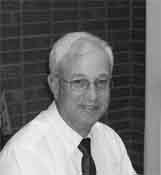 | Mark Kolarik is the President of the Kansas Teachers Community Credit Union, located in Pittsburg, KS, since 10-2002 and is a board member of the Kansas Corporate Credit Union located in Wichita, KS . He has been employed in the financial service industry for the last 31 years, having worked in several credit unions for 21years and 10 years in the banking industry. He holds a Bachelor of Business Administration degree from the University of Wisconsin-LaCrosse and is a Certificated Credit Union Executive. |
Banking & Finance
2011-02-01 14:24:00
ATM safety concerns
Question: With technology advancing every day, criminals seem to have a whole new arsenal to defraud the public. Recently, I heard someone mention ATM skimming as a new way thieves can access your account. Can you tell me exactly what this is, and how I can prevent it?
Answer: ATM skimming is practice crafty thieves have been using since the early 90’s but, with the advent of ever smaller devices, is on the rise.
ATM Skimmers will insert a skimming device on the faceplate or card reader of an ATM machine. When the ATM user swipes the card, the account information is stored in the skimming device, and used later by the thief to steal funds out of the account connected to that card and PIN number. Skimmers are actually stealing all of the information encoded on the magnetic strip of your card. Once they have that, they can re-create, or clone, your card.
Many people are not aware of this practice and therefore do not know what to do to prevent fraud. It is important to know that there are two basic types of skimming devices. There is a device that interferes with your transaction and devices that do not. One that interferes with a transaction will let you enter your PIN but display an error message and no money is withdrawn. The second is more difficult to detect because it does not disrupt your transaction, and you may not know anything is amiss.
The best way to protect your account information is to use ATMs with which you are familiar and be aware to any changes in the machine or the surroundings. If the machine seems to have been moved, or if the face plate is loose, walk away. If you notice new light bars, brochure holders or paneling, consider finding a different ATM. Also, frequently review your account transaction history for unauthorized transactions. Contact your credit union or bank immediately if unauthorized transactions are discovered.


